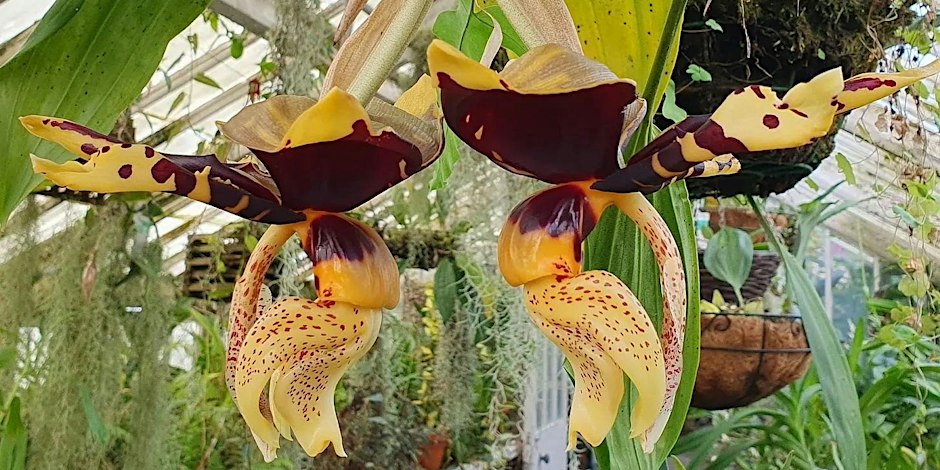For more than 30 years, a team of gardeners had lovingly tended to the thousands of plants hidden away in the humble polytunnels of Croxteth Country Park.
Sometimes they would work seven-day weeks. Last January, a regular visitor to the garden said it was like their “world was falling in” when they were told that they would be redeployed from their roles, likely spelling the end for the product of three decades’ graft.
The collection includes some of the rarest specimens in the horticultural universe, among them an ancestor of the South African Poskantoorboom, or ‘Post Office tree’ — the tree on which Portuguese navigator Pêro de Ataíde hung a note accounting the loss of his fleet in a storm. The tree is said to be the birthplace of Christian worship in South Africa.
Other plants aided medical research in the fight against diseases including HIV. It was, by all accounts, a global collection of significance.
But last January, it was headed for a one way trip — to the skip. It wasn’t the first time the collection had been in danger: threats in previous years came from WW2 (a bomb landed on the greenhouse during the Blitz), Derek Hatton (who turfed the plants out of Calderstones Park and demoted several gardeners, angered by their refusal to go on strike), and the Lib Dems (who had two-thirds of the collection dumped in a skip in the 2000s).
What was once a 16,000-plant collection in 2005 is now closer to 4,000. This was the basis of Liverpool City Council’s justification for their plans last year to move the expert gardeners to street cleaning duties. Back then, the council told us that due to the depletion of the collection, few rare plants remained.
The collection is now safe — a Trust has been established (website here). Best of all, the near-annual threats of funding cuts and job swaps seem to have perished on the vine.
But this campaign isn’t over. The wheels of change move slowly, and having returned to the park this week, the collection is more surviving than thriving. The plants may no longer been withering, but the greenhouses are — part of the roof collapsed on one of them recently.
The Trustees, together with your support, aim to develop a plan to not only save the collection for the future but will be considering how to extend and restore the collection to its former glory.
Whatever money is surplus to these early needs will help toward the £70,000 target that they have set to be able to achieve for the next stage of restoration, bringing the collection within Croxteth Hall Gardens back to its former glory and securing it for future generations.
These collections are so valuable to society, as Raoul Curtis-Machin, Director of Horticulture and Visitor Experience at Royal Botanic Gardens Edinburgh, described to in April, this is why Botanic Gardens matter:
- Conservation horticulture
- Species rescue
- Pest threat research
- Human pest problems
- Climate change adaptation
The Liverpool Botanical Collection is filled with such rare and endangered plants, we really need to preserve and protect this wonderful legacy for our City and our planet.
The first fundraising event is already planned for Saturday 16th March 2024, when they will be holding an “Orchid Study” day at Croxteth Hall, with Phil Seaton, a leading orchid expert, who will be talking at the event.
If you would like to help now, please donate, by sending it direct to their bank account:
Account Name: Liverpool Botanical Trust
Sort code: 30-99-50
Account: 17139363
Or by cheque to:
Liverpool Botanical Trust
c/o Lowlands Community Centre
13 Haymans Green

West Derby
Liverpool
L12 7JG
News Update
Liverpool City Council has recently been awarded £245,000 from the National Lottery Heritage Fund to protect the historic botanical collection. The council said lottery funding meant work can start to restore The Peach House, which will become the gateway to the collection and house some of the key botanical exhibits.
A council statement said it hoped the funding would be a catalyst for more, to help build on the ambition. The Trust still needs donations to help restore and protect the rest of the site.
Future plans include:
An education programme working with primary schools across the city to encourage children to connect with nature and show the links between botany and health and wellbeing.
A focus on how to make the collection a key visitor attraction, with guided tours, workshops and open days.
A dedicated website to open up the collection to people across the world who may not be able to visit in person. It will also ensure connections will be established with other worldwide botanical collections.

